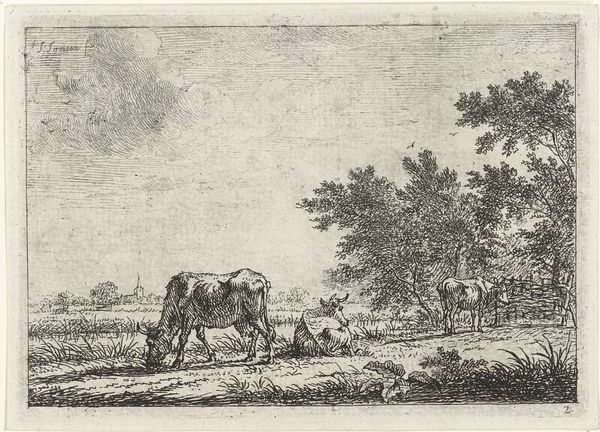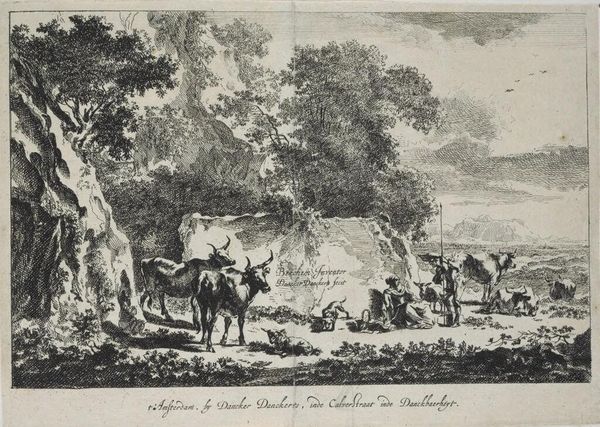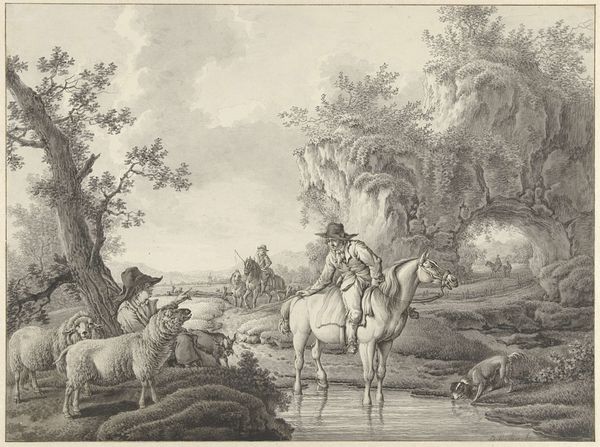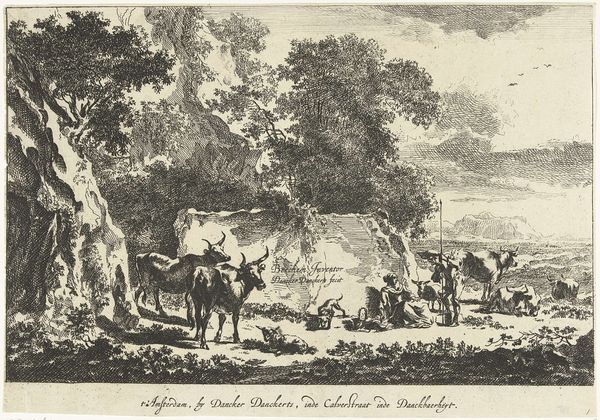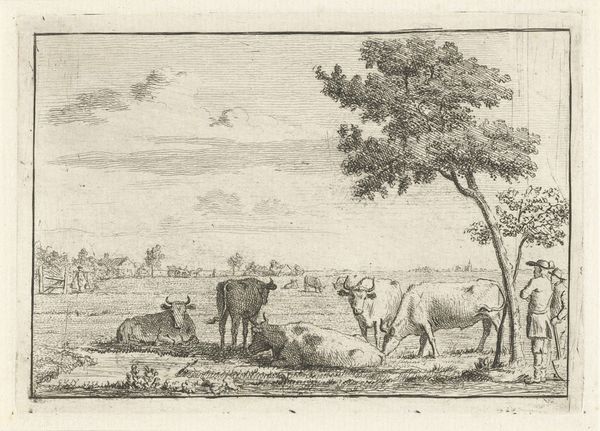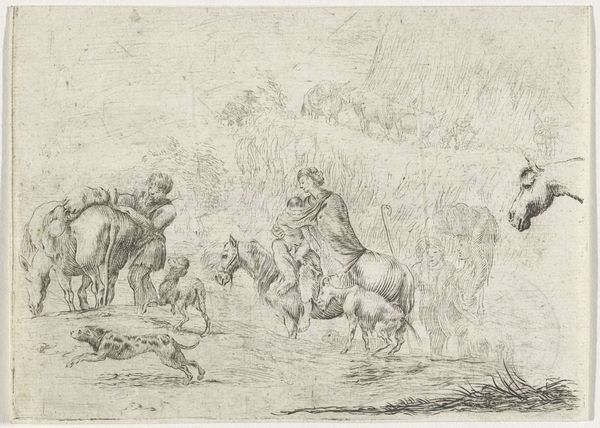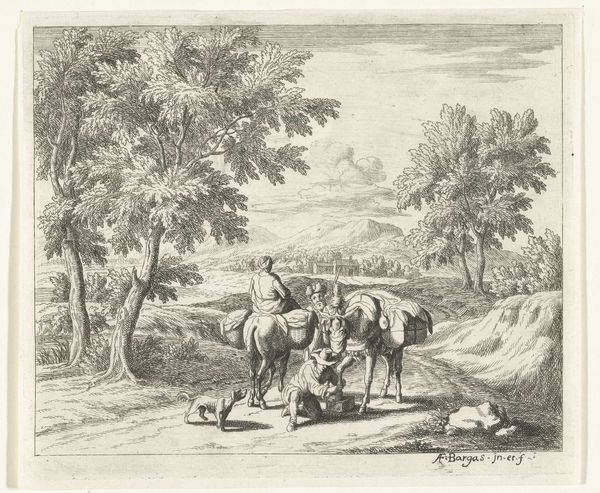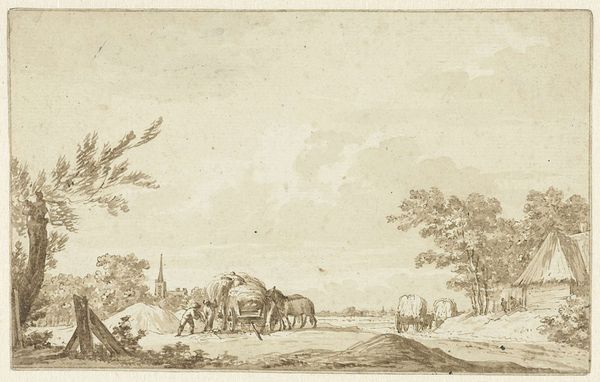
drawing, print, etching
#
drawing
#
baroque
# print
#
pen sketch
#
etching
#
landscape
#
figuration
#
line
#
genre-painting
Dimensions: height 158 mm, width 238 mm
Copyright: Rijks Museum: Open Domain
H. Pielmans created this etching of peasants crossing a stream with their livestock. Given the lack of biographical information available, we can still consider the cultural context of such pastoral scenes. In art history, representations of rural life have often served complex ideological functions. On one hand, they can idealize the simplicity and virtue of the countryside, presenting an escape from urban life. Yet, these images often mask the harsh realities of rural labor and the socio-economic disparities inherent in agrarian societies. Consider how class is subtly represented here: the peasants are burdened with labor, while the distant village hints at a more settled, possibly wealthier, existence. The livestock, central to their livelihood, dictates their path. There's a quiet dignity in their crossing, but it's crucial to acknowledge the unromanticized reality of their daily lives. How does this image resonate with contemporary discussions about land, labor, and the environment?
Comments
No comments
Be the first to comment and join the conversation on the ultimate creative platform.

